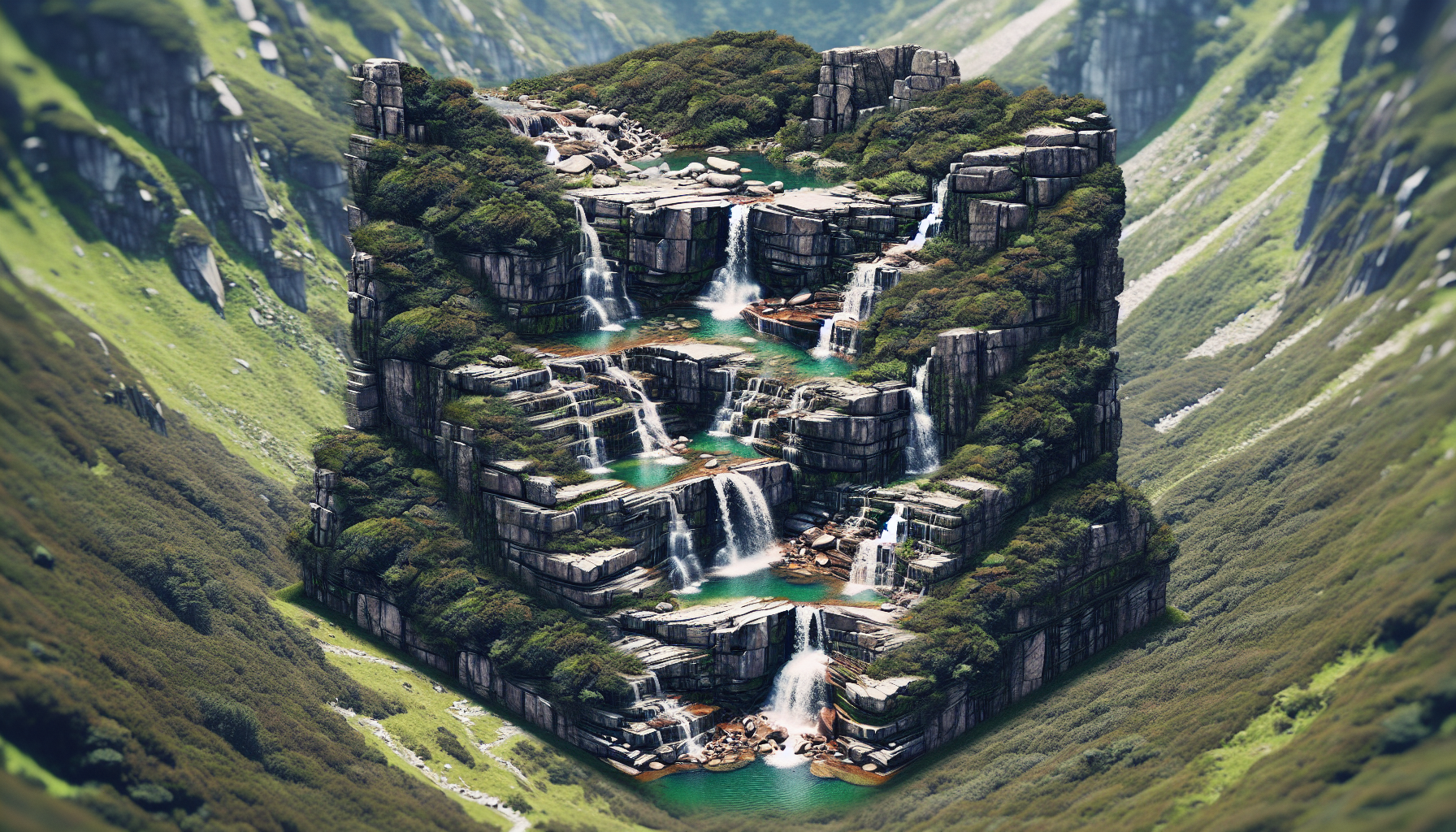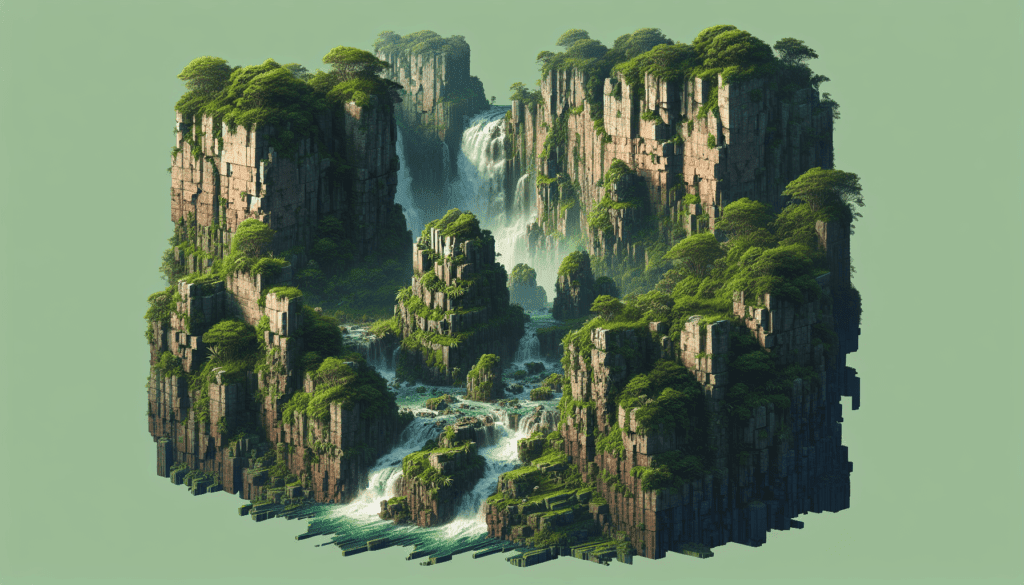Rock retaining walls, such as natural stone walls or concrete options, are in high demand due to their impressive durability and visually pleasing aesthetics in wall construction for gardens, landscapes, and hardscape projects. They can withstand the test of time, providing a long-lasting solution for your landscaping needs.
There are numerous benefits to utilizing rock retaining walls.
They can effectively prevent erosion, create level terraces, and even add seating areas to your outdoor space.
The natural beauty of rock also complements any architectural style, making it a versatile choice for homeowners.
To successfully build a rock retaining wall, proper planning is crucial.
Begin by evaluating the slope and soil conditions of your site, as this will determine the appropriate height and design for your wall. It is equally important to consider factors such as drainage and stability to ensure the longevity of your structure. When it comes to constructing rock retaining walls, Rockwell Construction, specializing in rockwall construction, ensures the highest quality and durability.
Click here to learn more about: rockwell-construction.com
Choosing the Right Materials for Your Retaining Wall
When choosing materials for a wall design, it is important to consider several crucial factors such as wall types and wall systems. These factors include understanding the purpose and location of the wall, as well as the climate and environmental conditions in your area.
These considerations will help you select materials that can withstand the elements.
You should also consider the style and aesthetic you want to achieve in your outdoor space.
It is important to keep in mind the wall maintenance requirements and your budget when making a decision. By carefully considering all of these factors, you can ensure the longevity and overall appeal of your wall installation.

Building a Stable and Durable Retaining Wall
When it comes to building a stable and durable retaining wall, the choice of materials is crucial for ensuring wall stability and durability. The right materials ensure wall functionality, wall aesthetics, and wall strength.
For a rustic and natural look that blends well with the surroundings, rock retaining walls are a great choice.
If you’re looking for a polished and refined appearance, natural stone retaining walls are perfect for areas prone to soil erosion or steep slopes.
For versatility and durability, concrete retaining walls are ideal for retaining large amounts of soil or creating terraced landscapes. Remember to consider factors like wall height, slope, soil conditions, and overall wall purpose to build a retaining wall that stands the test of time.
This information is provided by Rockwell Construction, known for its expertise in rock wall retaining walls and helical deck piers.
| Wall Material | Appearance | Strength | Suitable Areas |
|---|---|---|---|
| Rock Retaining Walls | Rustic and natural | Good | Blends well with surroundings. |
| Natural Stone Retaining Walls | Polished and refined | High | Areas prone to soil erosion or steep slopes. |
| Concrete Retaining Walls | Versatile and durable | Very high | Retaining large amounts of soil or creating terraced landscapes. |
Enhancing Garden Aesthetics with Retaining Wall Landscaping
When considering the design and construction of wall retaining walls in your garden, it is important to factor in the wall cost and maintenance of the walls, as well as wall erosion control measures and wall landscaping. The initial investment may vary depending on the materials and wall height, but it is crucial to consider the long-term benefits and durability of the walls.
Proper wall erosion control and maintenance can significantly extend the lifespan of your retaining walls, ensuring that they continue to enhance the aesthetics of your garden for years to come.
Whether you are creating wall terracing landscapes or adding structural support, thoughtful consideration of wall architecture and materials will result in a stunning and functional outdoor space.
Understanding Different Types and Designs of Retaining Walls
Retaining walls is a crucial component of landscape design, serving to prevent soil erosion and create level spaces on sloped terrain through careful wall construction techniques and wall reinforcements. The construction and engineering techniques employed in these walls are essential for their durability and effectiveness.
Factors such as the choice of building materials, reinforcements, footings, and anchors all play a critical role in ensuring the stability and longevity of the structure.
Understanding the different types and designs of retaining walls is key to making informed decisions that align with the specific requirements of any project.
Whether it’s rock retaining walls, natural stone retaining walls, or concrete retaining walls, each option has its benefits and considerations to take into account.
| Factors | Importance |
|---|---|
| Building materials | Choice of materials affects durability and effectiveness. |
| Reinforcements | Crucial for the stability and longevity of the structure. |
| Footings | Play a critical role in preventing soil erosion. |
| Anchors | Contribute to the stability of the retaining wall. |
Exploring Cost-effective Options for Rock Retaining Wall Installation
Exploring cost-effective options for rock retaining wall stability analysis requires careful consideration of the wall soil analysis and wall compaction. A thorough wall stability analysis, soil analysis, and site preparation are crucial steps in ensuring the integrity of the retaining wall.
From wall excavation and wall backfilling to wall compaction and wall grading, each phase of the installation process must be carefully executed to achieve the desired results.
By incorporating these considerations into the installation, it is possible to create a durable and visually appealing retaining wall while staying within budget constraints.
Benefits of Using Rock Walls for Landscaping
Using rock wall design for landscaping offers numerous benefits, including natural beauty and added durability to your outdoor space. Natural stone walls provide a timeless and elegant solution, enhancing the overall aesthetic appeal and functionality of outdoor spaces.
With durable materials and minimal maintenance, they are a cost-effective choice for terraced gardens and defining outdoor living areas.
Rock wall maintenance can withstand harsh weather conditions and continue to enhance the beauty of outdoor landscapes for years to come.
Whether it’s for retaining walls or helical deck piers, rock wall installation provides a versatile and durable solution for various landscaping needs. With proper rock wall repair and maintenance, natural stone walls offer a long-lasting and attractive addition to any outdoor space.
| Benefits of Rock Wall Design | |
|---|---|
| Natural Beauty | Enhances the overall aesthetic appeal. |
| Added Durability | Can withstand harsh weather conditions. |
| Cost-Effective | Minimal maintenance and long-lasting. |
| Versatile Solution | Suitable for various landscaping needs. |
Choosing the Right Materials for Your Retaining Wall Project
When it comes to selecting the ideal materials for your retaining wall project, it’s crucial to consider factors such as rock wall drainage and stability to ensure the longevity and effectiveness of the structure. The purpose of the retaining wall will also play a significant role in determining the most suitable materials for the job.
It’s important to take into account any specific regulations or guidelines in your area that may impact the selection of materials for your retaining wall.
Environmental impact and drainage requirements should be carefully considered to ensure the long-term functionality and durability of the retaining wall.
Essential Tips for Designing a Visually Appealing Rock Wall
Rock retaining walls are an integral part of landscaping and creating visually appealing outdoor spaces, especially when considering the rock wall terracing to add dimension and functionality to the overall design. When designing a rock retaining wall, factors such as rock wall height, shape, and terracing play a crucial role in enhancing the overall aesthetic appeal.
The height of the wall adds drama and interest to the landscape, while the shape can create unique visual effects.
Incorporating terracing adds depth and dimension to the design.
It’s also important to consider the landscaping and architecture to ensure the wall complements the natural surroundings. Proper erosion control is essential for maintaining the integrity and beauty of the structure.
Factors to Consider When Designing a Rock Retaining Wall
- The height of the rock wall adds drama and interest to the landscape.
- The shape of the wall can create unique visual effects.
- Incorporating terracing adds depth and dimension to the design.
- Proper erosion control is essential for maintaining the integrity and beauty of the structure.
